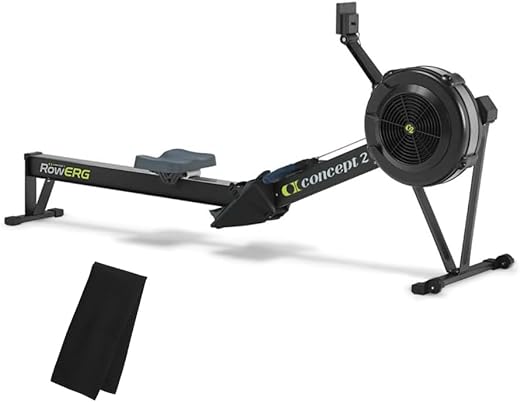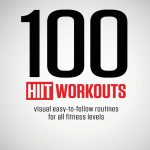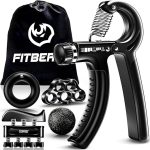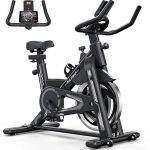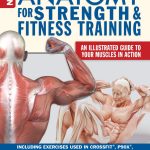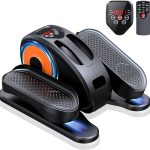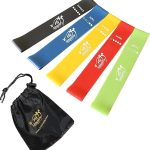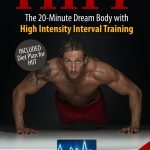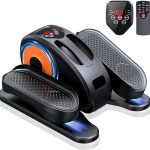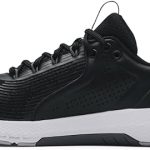In this step-by-step guide, we aim to help beginners effectively use a rowing machine for a full-body workout. Follow these simple steps with empathy and guidance to get started on your fitness journey with a rowing machine.
Understanding the Rowing Machine
- Familiarize yourself with the rowing machine components:
- Sit on the seat and adjust it for comfort.
- Grip the handle with both hands; make sure your grip is secure.
- Place your feet securely on the footrests.
- Adjust the resistance settings according to your fitness level or workout goals.
Remember, proper understanding of these parts ensures a safe and effective rowing session. Practice using each component before starting your workout for optimal performance.
Adjusting Foot Straps
Secure your feet in the foot straps by placing your feet inside them with the balls of your feet over the center of the foot plates. Pull the straps tight to ensure a snug fit around your feet. This will help you maintain a stable position and maximize your rowing performance. For example, adjust the straps so they are firm but not uncomfortable, then practice rowing a few strokes to ensure your feet stay securely in place during the movement.
Proper Posture
- Keep your back straight by sitting tall on the rowing machine.
- Engage your core muscles by pulling your belly button toward your spine as you push and pull the handles.
- Relax your shoulders by letting them drop away from your ears and avoid shrugging during the rowing motion.
- Remember to maintain this posture throughout the entire rowing session to prevent strain or injury.
Starting Position
- Sit on the seat of the rowing machine and position yourself comfortably.
- Grab the handle firmly with both hands.
- Bend your knees and position your feet securely in the foot straps.
- Extend your arms forward in front of you with a slight bend at the elbows to prepare for the rowing motion.
The Stroke
- Push with your legs: Drive your legs down into the footrests with power to initiate the stroke.
- Lean back slightly: Lean back from your hips, keeping your back straight but at a slight angle.
- Pull the handle towards your chest in a fluid motion: With your legs extended and back leaned back, smoothly bring the handlebar towards your chest, engaging your core and arms. Remember to maintain a continuous and controlled movement throughout the stroke.
Return Position
- Extend your arms, lean forward, and bend your knees simultaneously.
- Push through your legs to power your backward motion.
- Use your core muscles to maintain stability and control as you return to the starting position.
- Keep your back straight and engage your abdominal muscles to support your posture during the movement.
Breathing Technique
Exhale forcefully as you exert force during the stroke. Inhale deeply as you return to the starting position. Coordinate your breathing with your movements to optimize your performance and energy efficiency. Focus on your breath to enhance your stroke technique and overall experience.
Setting Goals
Set achievable goals to monitor your advancement and keep your motivation high while rowing. Start by determining specific objectives, such as increasing your rowing distance by 500 meters in a week. Record your progress after each session by noting down the distance covered, time taken, and any improvements observed. Adjust your goals as you progress to ensure they remain challenging yet reachable, like aiming to reduce your split time by 5 seconds over the next two weeks. Stay committed and celebrate each milestone you achieve to maintain your momentum.
Cool Down
Perform light stretching to cool down your muscles and prevent stiffness. Focus on major muscle groups like legs, arms, and back. Hold each stretch for 15-30 seconds and remember to breathe deeply. Finish with gentle movements to promote relaxation.
Final Thoughts on Rowing Basics
In conclusion, mastering the rowing machine as a beginner requires a focus on proper form, technique, and consistency. By following the guide’s tips and practicing regularly, you can improve your skills and maximize the benefits of this effective workout tool. Remember, persistence and attention to detail will help you make the most out of your rowing machine workouts.
Equipment Needed
Rowing Machine Basics
Maximizing Your Workout with Proper Form and Technique
- Adjust the foot straps to ensure your feet are securely in place on the footrests
- Sit on the seat with your back straight and grasp the handle with an overhand grip
- Push off with your legs, then lean back slightly and pull the handle towards your chest, engaging your arms and back
- Extend your arms, lean forward, and bend your knees to return to the starting position
- Focus on maintaining proper form and pace to prevent injury and maximize the effectiveness of your workout
Rowing Machine FAQs
When purchasing a rowing machine, there are several key features to consider:
- Resistance type: Look for rowing machines with different resistance types such as air, water, magnetic, or hydraulic to suit your preference and workout intensity.
- Build quality: Opt for a rowing machine made from durable materials that can withstand regular use and provide a smooth rowing experience.
- Comfort: Check for features like a comfortable seat, adjustable footrests, and a handlebar with good grip to ensure a comfortable and safe workout.
- Performance monitoring: Choose a rowing machine with a monitor that tracks important metrics like time, distance, strokes, and calories burned to help you track your progress.
- Space and storage: Consider the size of the rowing machine and whether it can be easily folded or stored when not in use, especially if you have limited space.
By considering these features, you can select a rowing machine that best fits your needs and helps you achieve your fitness goals effectively.
Rowing, running, and cycling are all excellent forms of cardio exercise that offer different benefits. Rowing is a full-body workout that engages both the upper and lower body muscles, making it a great choice for overall strength and endurance. Running primarily targets the lower body muscles and is a weight-bearing exercise that can help improve bone density. Cycling is also a lower body workout that is easier on the joints compared to running, making it a good option for those with joint issues. Each form of exercise has its own advantages, so choosing the one that best fits your fitness goals and preferences is key.
A rowing machine primarily works the muscles in the back, shoulders, and arms. Specifically, it targets the latissimus dorsi, trapezius, rhomboids, deltoids, biceps, and forearms. Additionally, rowing engages the core muscles, glutes, and legs to provide a full-body workout.
